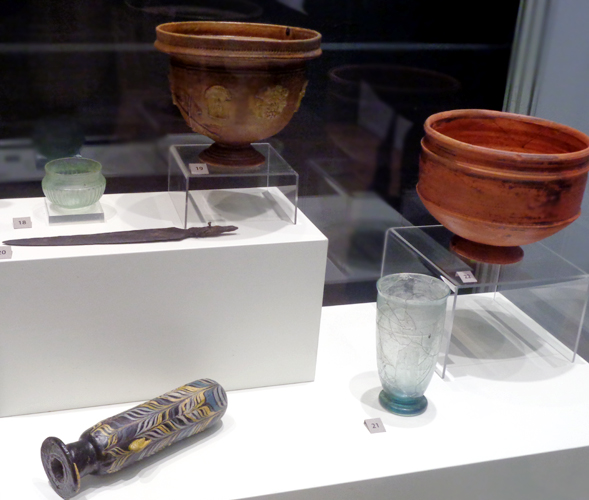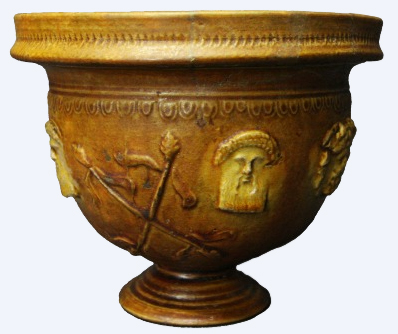Artifacts from the Apollonia Pontica antique necropolis in the Budjaka area of the Black Sea port town of Sozopol were among the most impressive findings at the 10th national exhibition named Bulgarian Archaeology. Dr. Margarita Popova from the National Museum of History and Dr. Teodora Bogdanova from the Archaeological Museum of Sozopol headed the excavations. An area of 1.2 ha was researched there over the past season. Dr. Bogdanova says that the most interesting artifact was a family tomb with impressive architecture, found on the territory of the huge site. It is the only one known so far from the antique Greek world, despite the intensive research of the Greek necropolises in Bulgaria and Romania. More from Dr. Teodora Bogdanova:
 “There were 7 burials inside, from two different periods. I.e., at first it was built up during the Hellenic epoch and was used as a family tomb. A total of 7 people were buried there, or the entire family. The elderly couple was in the central chamber, while three other graves obviously contained the remains of four children. The artifacts found inside are ceramic and glass vessels, terracotta figures and gold jewelry, the latter lying inside one of the children’s graves: a gold necklace and gold earrings of the ‘lion’s head’ type, popular over the Hellenic period. This whole facility was built up and used from the mid-3rd c. to the early 2nd c. BC. The central chamber was robbed at a later moment and the graves in the center were demolished. Obviously that was what the robbers could find. Then in the 1st c. AD the spot was again used for tombs – two of those have been found, dated to the Roman period. However, since they were not ruined, we decided that the ruining and burglary of the Hellenic tomb happened prior to the 1st c. AD – still in Antiquity. It looks like those people were pretty well off, as the objects which remained after the tomb’s offending show that the gifts were quite rich.”
“There were 7 burials inside, from two different periods. I.e., at first it was built up during the Hellenic epoch and was used as a family tomb. A total of 7 people were buried there, or the entire family. The elderly couple was in the central chamber, while three other graves obviously contained the remains of four children. The artifacts found inside are ceramic and glass vessels, terracotta figures and gold jewelry, the latter lying inside one of the children’s graves: a gold necklace and gold earrings of the ‘lion’s head’ type, popular over the Hellenic period. This whole facility was built up and used from the mid-3rd c. to the early 2nd c. BC. The central chamber was robbed at a later moment and the graves in the center were demolished. Obviously that was what the robbers could find. Then in the 1st c. AD the spot was again used for tombs – two of those have been found, dated to the Roman period. However, since they were not ruined, we decided that the ruining and burglary of the Hellenic tomb happened prior to the 1st c. AD – still in Antiquity. It looks like those people were pretty well off, as the objects which remained after the tomb’s offending show that the gifts were quite rich.”
Apparently someone knew that valuable objects were hidden inside and the tombs were attacked quite early in time. Fortunately the children’s grave was somehow at the periphery and remained untouched, to the delight of the archaeologists.
 As far as the Roman graves are concerned, cremation on the spot happened there. A gold wreath for the head was found in one of them. We are talking about a middle-aged man – 20 to 40, buried with an iron knife and alongside rare ceramic and glass vessels. An artifact from one of the tombs is of particular interest: a rare relief cup, imported from the ancient Greek town of Pergamum. It was made during the 1st c. AD. There is only one of the kind in Bulgaria, found in the Black Sea port town of Varna. It is decorated with Dionysus’ head and also has scenes of fertility and welfare.
As far as the Roman graves are concerned, cremation on the spot happened there. A gold wreath for the head was found in one of them. We are talking about a middle-aged man – 20 to 40, buried with an iron knife and alongside rare ceramic and glass vessels. An artifact from one of the tombs is of particular interest: a rare relief cup, imported from the ancient Greek town of Pergamum. It was made during the 1st c. AD. There is only one of the kind in Bulgaria, found in the Black Sea port town of Varna. It is decorated with Dionysus’ head and also has scenes of fertility and welfare.
English version: Zhivko Stanchev
A unique statue from the Roman period of Odessos, preliminarily dated to the late 2nd to the first half of the 3rd century, has been discovered during excavation works near the train station in Varna, said archaeologists from the Varna Regional..
Petrich municipality has received an award for original promotion of the tourist destination Heraclea Sintica , Katya Stoyanova, head of the "Restoration, conservation and socialization of Heraclea Sintica" project, said this for BTA. The award..
What was the animal world like in the region of what is today the town of Trun more than 80 million years ago – that is the question paleontologists from the Bulgarian Academy of Sciences’ National Museum of Natural History have been trying to answer...
On November 22 and 23, the Bulgarian Orthodox Church will solemnly celebrate the 100th anniversary of the consecration of the Patriarchal Cathedral "St...
The Patriarchal Cathedral of St Alexander Nevsky is celebrating its temple feast today. The cathedral, a symbol of the Bulgarian capital, was built "in..

+359 2 9336 661
